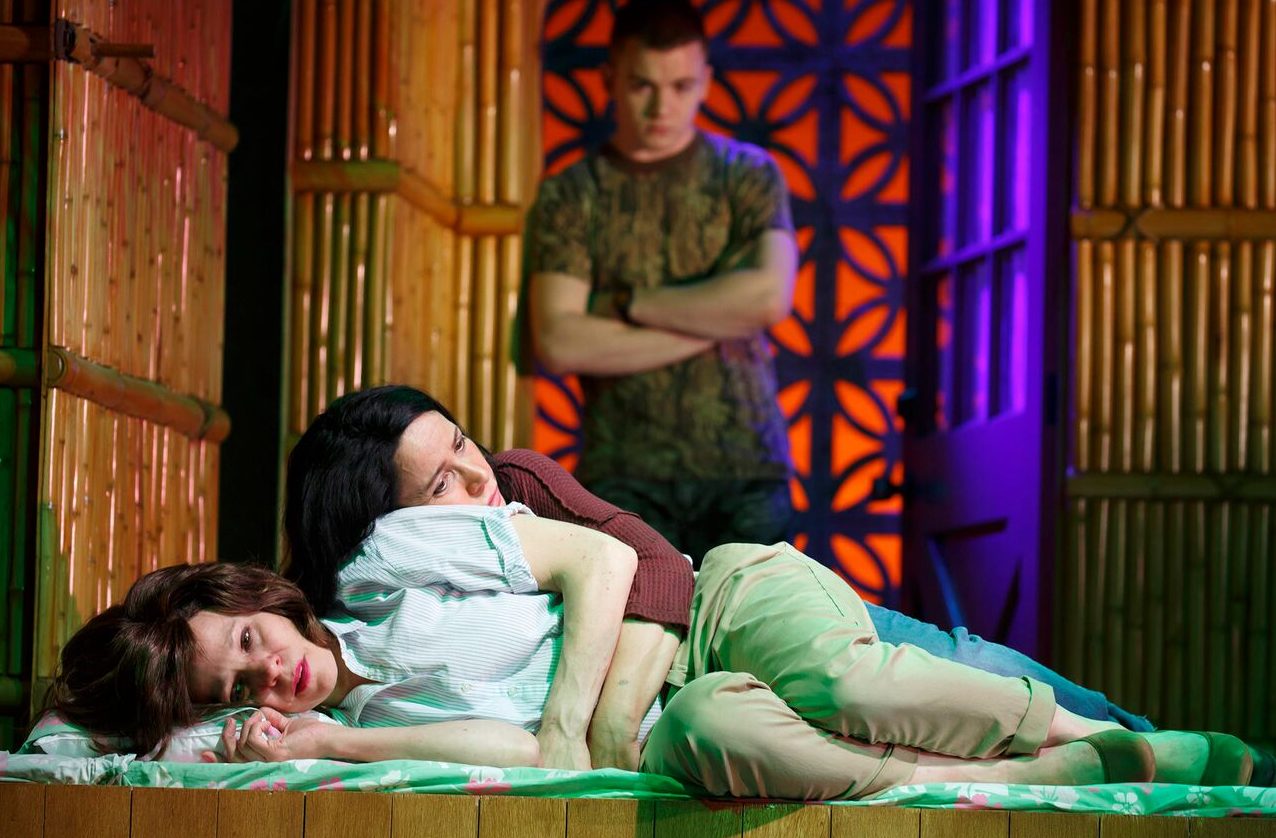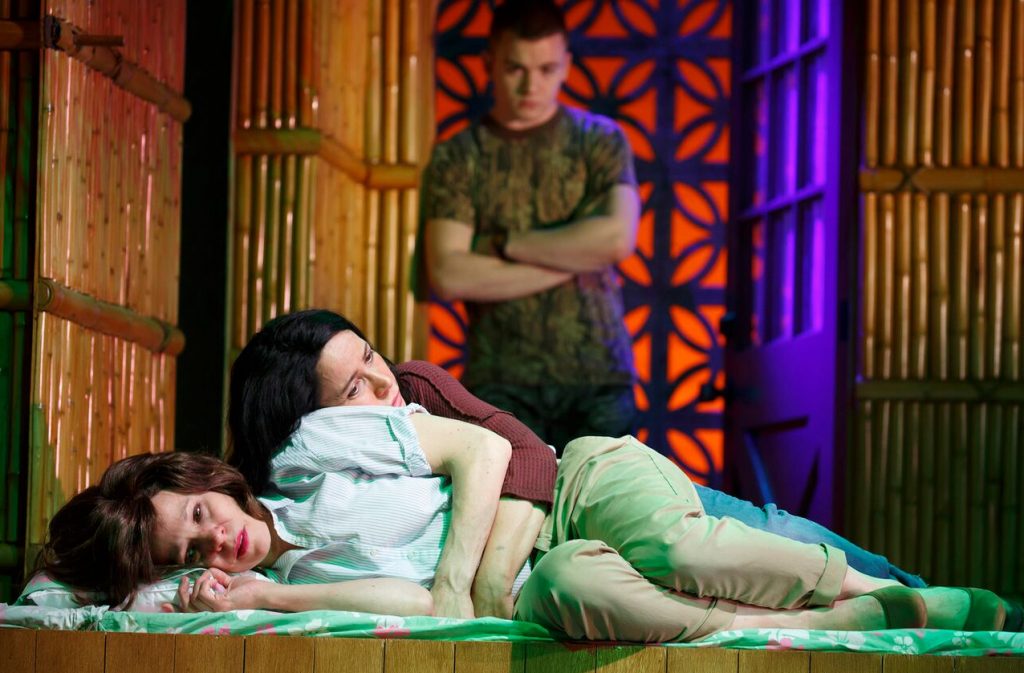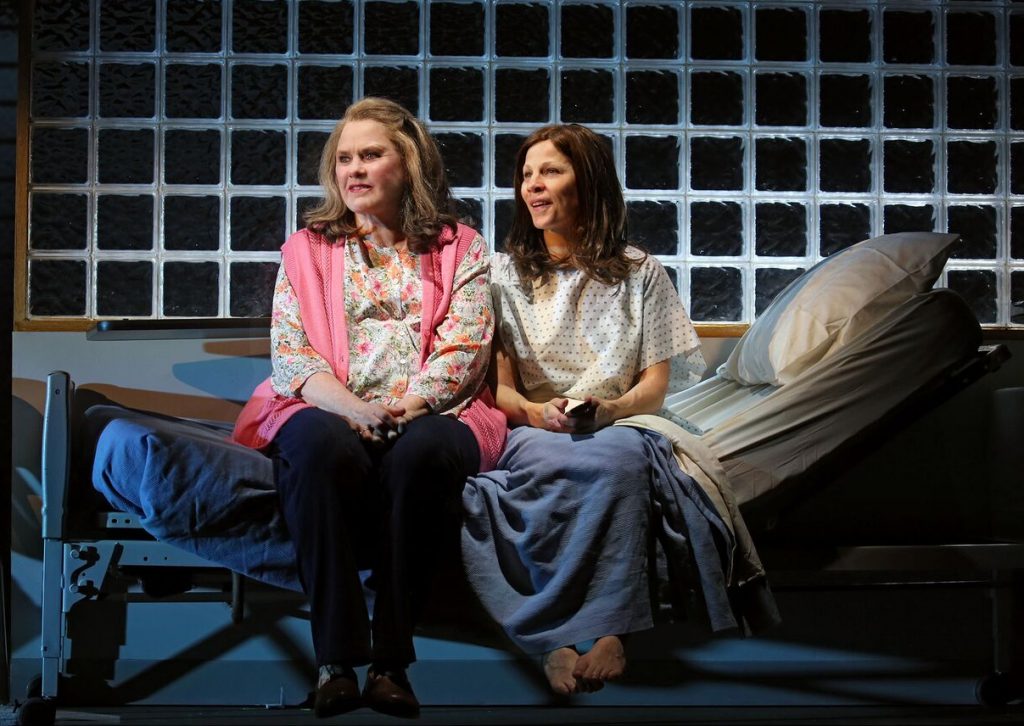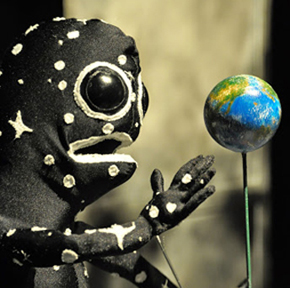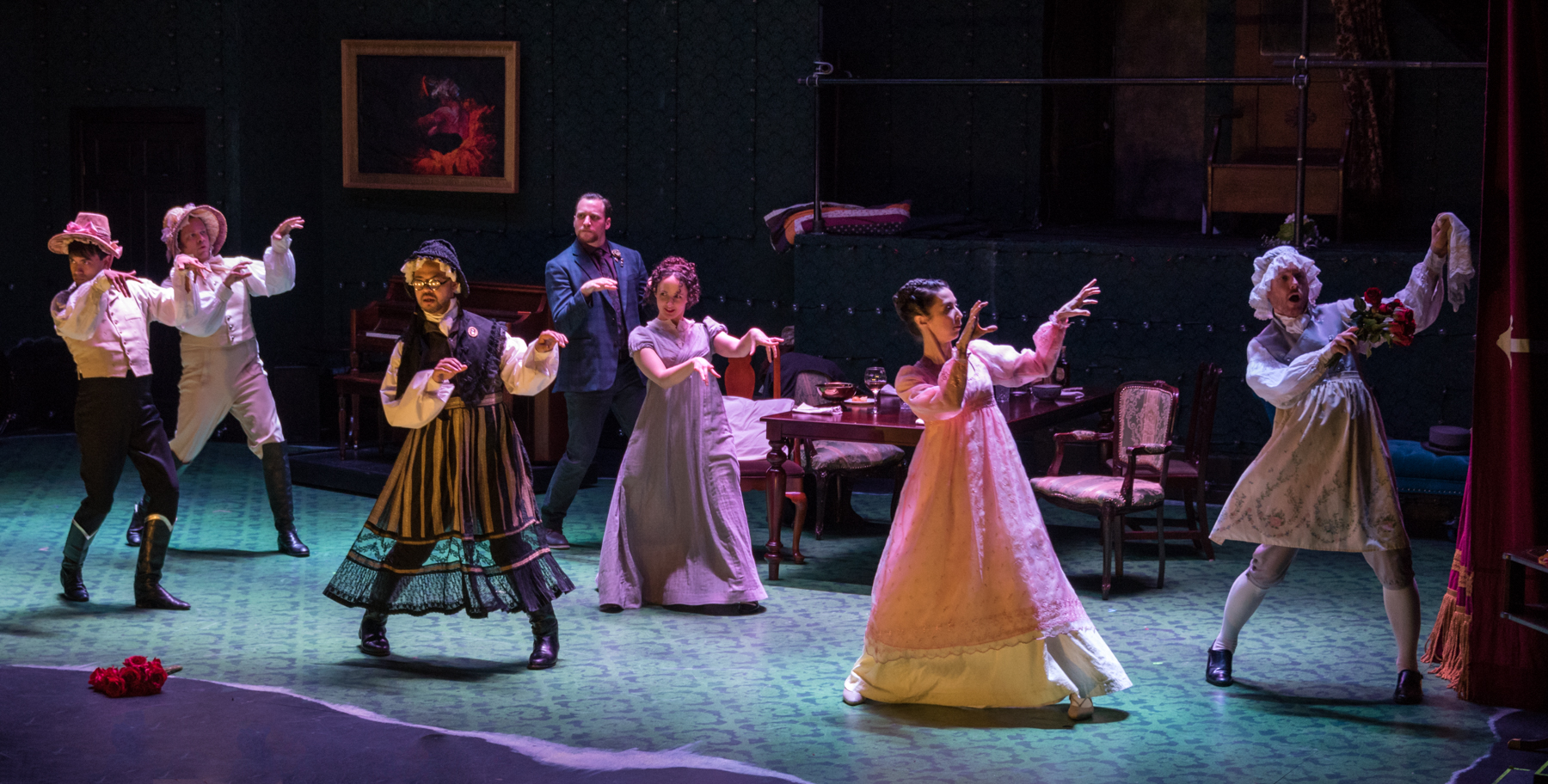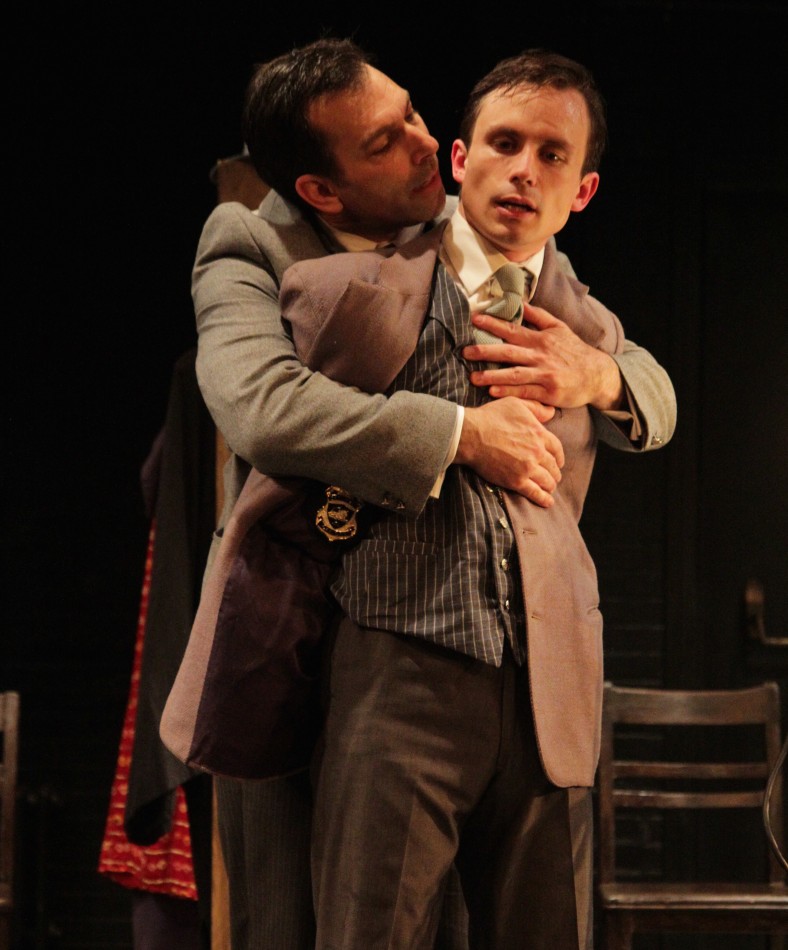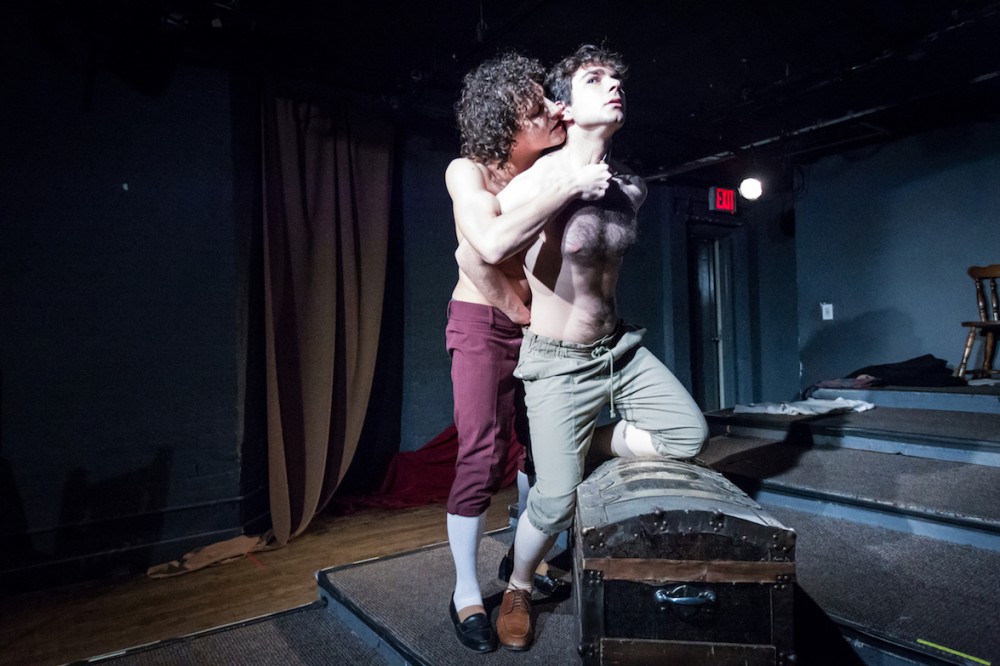by Brian Scott Lipton
Death may not usually be a laughing matter, but the yuks definitely outweigh the tears in Marvin’s Room, Scott McPherson’s award-winning 1991 play about two estranged sisters who reunite after nearly two decades when one of them is diagnosed with leukemia. While the imbalance of emotions is undeniably inherent in the script, Anne Kauffman’s unevenly cast and directed production at the American Airlines Theatre (in the work’s long-overdue Broadway debut) further tips the scale towards lightness.
Indeed, the show’s first act is played almost as pure comedy from the moment that the sweet-natured Bessie (a slightly too-understated if decidedly naturalistic Lili Taylor) meets with the muddle-headed Dr. Wally (a funny Triney Sandoval), who can’t even remember his patient’s first name. (From the get-go, as well, Laura Jellinek’s inelegant rotating set doesn’t effectively handle the work’s numerous locations, including Disney World.)
A woman who has patiently spent the past 20 years caring for both her bedridden father, Marvin (here unseen but sometimes heard in his room), and her somewhat wacky Aunt Ruth (the sublime Celia Weston in the show’s best performance), Bessie believes she is just suffering from fatigue. Alas, such is not the case. Bessie is diagnosed with the dreaded cancer, forcing her to call upon sister Lee (Janeane Garofalo, nicely mixing the comic and the bathetic) to come to Florida to see if her bone marrow is a match. (In the play’s original production, Bessie’s illness felt like a metaphor for AIDS, but today, it just seems like leukemia.)
Lee dutifully arrives with baggage in every sense of the word, including her willful abandonment of her family and her two sons, the extremely unhappy and mentally unbalanced Hank (Jack DiFalco, whose deliberate flatness in the show’s first act deflates some of the drama) and younger, chipper Charlie (a fine Luca Padovan), who spends much of his time with his nose in the book. Exasperated by Hank’s sullenness and disobedience, Lee has practically given up on having a “normal” relationship with her eldest son. However, Bessie finds a way to connect with the troubled young man, and Taylor’s scenes with DiFalco are among the production’s most successful.
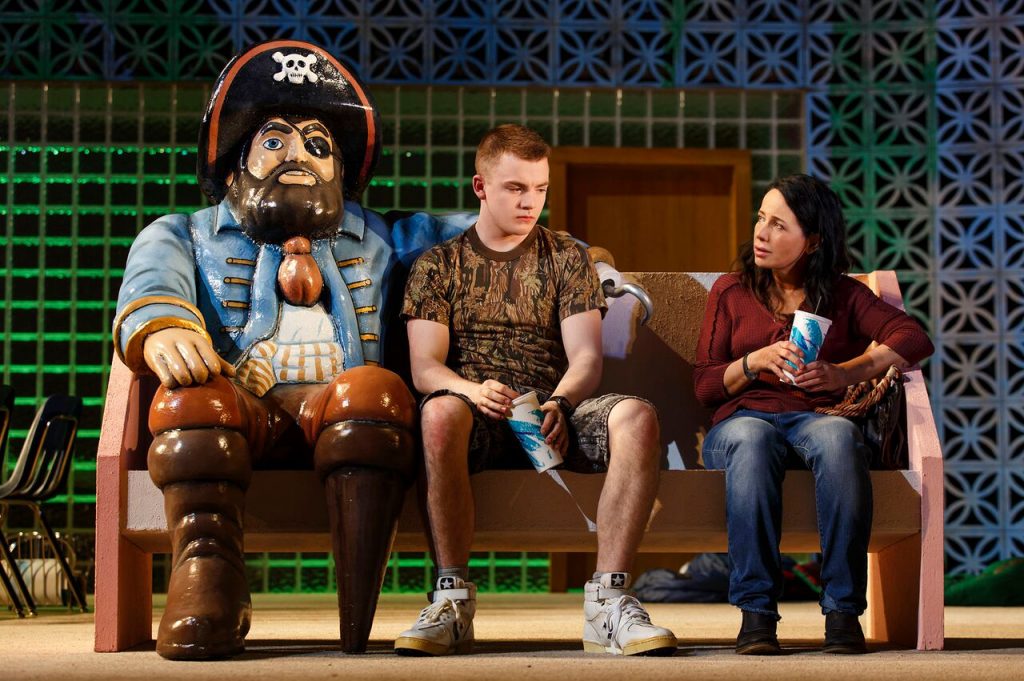

For their part, Garofalo and Taylor exude the chemistry of siblings (although lest we forget their relationship, the amount of times Garofalo says “I’m your sister” could make a dandy drinking game). But it feels too often that mere inertia has kept the pair apart for so long, and not mutual resentment; only in an Act II scene, when the pair visit a nursing home (where Lee wants to place Marvin and Ruth in the event of Bessie’s death), do we really understand how their fundamentally different dispositions may have made their relationship untenable.
After the nursing home scene, though, and for the rest of the play, Kauffman and the cast smartly probe the play’s depths, and the final few scenes are quite moving. Strangely, though, Kauffman lets the show end too abruptly, as if it’s just one episode in the kind of soap operas that Ruth watches religiously, even though the audience will be not able to tune in tomorrow (or next week or next month) to see how it ends.
Marvin’s Room. Through August 27 at the American Airlines Theatre (227 West 42nd Street. between Seventh and Eighth Avenues). www.roundabouttheatre.org
Photos: Joan Marcus


